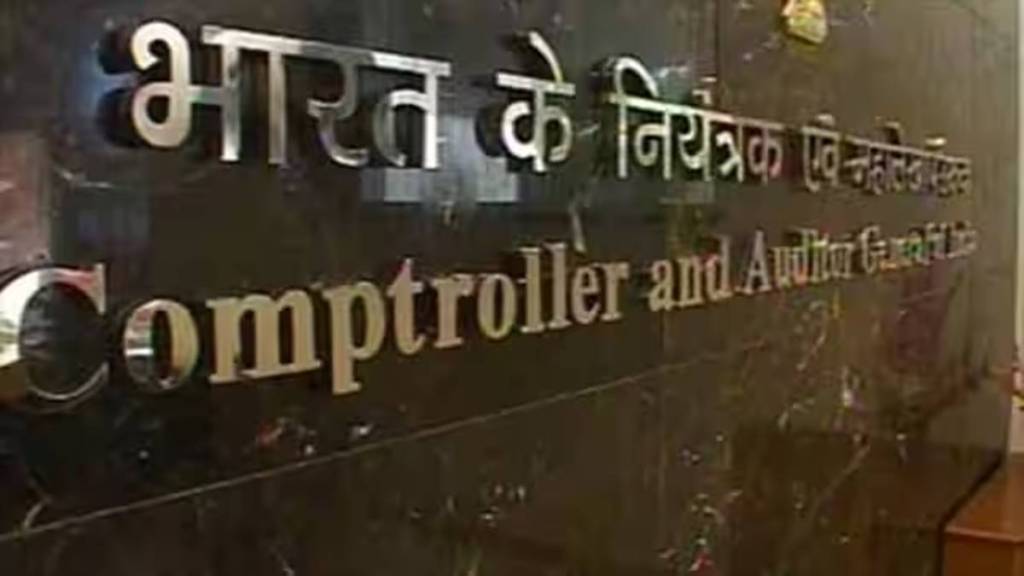The Comptroller and Auditor General of India has flagged several irregularities in the implementation of the Ayodhya development project in Uttar Pradesh under the Centre’s Swadesh Darshan Scheme.
The audit report, tabled in the Lok Sabha on Thursday, states that undue benefits to the tune of Rs 19.73 crore were made to contractors in six projects/circuits across six states.
The Ayodhya development project is part of the Ramayana Circuit under the Swadesh Darshan Scheme. It was sanctioned with a cost of Rs 127.21 crore on September 27, 2017, of which Rs 115.46 crore have been released. Apart from Ayodhya, Chitrakoot and Shringverpur are two other projects under the Ramayana Circuit in Uttar Pradesh.
The audited projects under the Swadesh Darshan Scheme included Ayodhya development; development of Sinquerim-Aguada Jail, Goa; Himalayan Circuit, Himachal Pradesh; Heritage Circuit, Telangana; development of Rangpo-Singtam, Sikkim; and Buddhist Circuit, Madhya Pradesh.
“The contractor engaged by the implementing agency viz., Uttar Pradesh Rajkiya Nirman Nigam, was required to submit performance guarantee at the rate of five per cent of the contract price of Rs 62.17 crore, which worked out to Rs 3.11 crore. However, the contractor submitted a lesser amount of performance guarantee i.e., Rs 1.86 crore only, at the time of its renewal (September 2021) without citing any reason on record,” the report states referring to irregularities in the Ayodhya development scheme.
“Work at Guptar Ghat, Ayodhya was split into 14 lots of equal sizes and works were awarded to different private contractors. However, the executing agency (Irrigation Department) did not take due care in making comparative analysis of the financial bids/rates offered by the contractors and awarded works of similar nature and sanctioned costs to the same contractors but at varying rates resulting in failure to save Rs 19.13 lakh,” the report added.
The report further states that GST registrations of three contractors were cancelled by the state government suo motu after awarding of works to them. The move left no registered contractors who, as a result, were no longer entitled to collect GST. “However, a total of Rs 19.57 lakh was irregularly paid to one contractor against his GST registration and in case of other two contractors, it was pending for payment, whereas full amount of GST was liable to be deducted and deposited by the executing agency (Irrigation Department) itself,” it said.
To substantiate its claim of irregular payments to contractors for works not executed by them, the CAG report also cites a case study of Gupkar Ghat development. “The work of development of the Guptar Ghat included work of 23,767 sq.mtr ‘supplying and fixing of stone patia’ at the rate of Rs 1,447.50 per sq.mtr. This work included the cost of MS clamp (supply and fixing) at Rs 216.88 per sq.mtr. (Rs 136.88 for supply and Rs 80.00 for fixing). The work was executed and payment was made to the private contractors at the rates quoted by them in their respective agreements,” the report said.
“During site inspection, it was observed that no MS clamps were fixed. However, work was measured, including supply and fixing of MS clamps, against which an amount of Rs 51.55 lakh (excluding GST at 12 per cent) was paid to the contractors. Since no work of supply and fixing of MS clamps was done at site, the cost of the same should have been deducted from the bills of the contractors. Thus, non-deduction thereof resulted in excess payment of Rs 57.73 lakh (including GST at 12 per cent) to contractors in the final bill,” the report said.
The CAG report further also highlighted wasteful/excess expenditure to the tune of Rs 8.22 crore in the implementation of the Ayodhya development project and faulted the state government for failing to exercise due care in the assessment of the actual amount payable towards centage, GST and Labour cess.
“Thus, excess amount of Rs 6.07 crore was sanctioned due to considering incorrect cost (estimated cost instead of actual cost) of the works carried out by implementing agencies and out of this, Rs 3.98 crore was also released (Irrigation Department: Rs 1.18 crore and Uttar Pradesh Rajkiya Nirman Nigam: Rs 2.80 crore), resulting in excess payment,” it said.
The report said that the sanctioned cost of the works was found overestimated by Rs 3.86 crore since the Uttar Pradesh Rajkiya Nirman Nigam, the executing agency did not reduce the cost of the works by five per cent towards departmental savings in the estimates being government work in terms of State government orders.
The report also cites a lack of an appropriate monitoring mechanism during the initial stages of the project. The CAG report states that a state-level committee that the state government was to appoint as per the scheme guidelines for monitoring and timely implementation of the project was set up two years after the sanction of the project.
“Further, no progress report was sent to MoT (Ministry of Tourism) prior to February 2021 and even after that financial and physical progress reports were not sent on monthly basis to MoT indicating inadequate monitoring by the state government,” it said.


